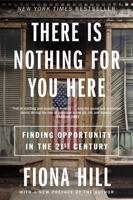Publisher's Synopsis
This important study begins with America's first secular utopia at New Harmony in 1824 and traces successive utopian experiments in the United States through the following centuries. For the first time, readers will come to realize that American communalism is not a disjointed, erratic, almost ephemeral part of our past, but has been an on-going, essential part of American history. We have a communal utopian motif that sets the history of the United States apart from any other nation. The utopian communal story is just one other dimension of the Puritan concept that America was a city upon a hill, a beacon light to all the world where the perfect society could be built and could flourish.
After discussing New Harmony and other Owenite communities, the author examines nine Fourierist utopias that were built before the Civil War. Next, he analyzes the five Icarian colonies that, collectively, were the longest-lived, non-religious communal experiments in American history. Then, discussion moves to the seven Gilded Age socialist cooperatives, followed by the utopian communities created during President Franklin D. Roosevelt's New Deal. Finally, Sutton turns to the hippie colonies and intentional communities of the last half of the 20th century.












